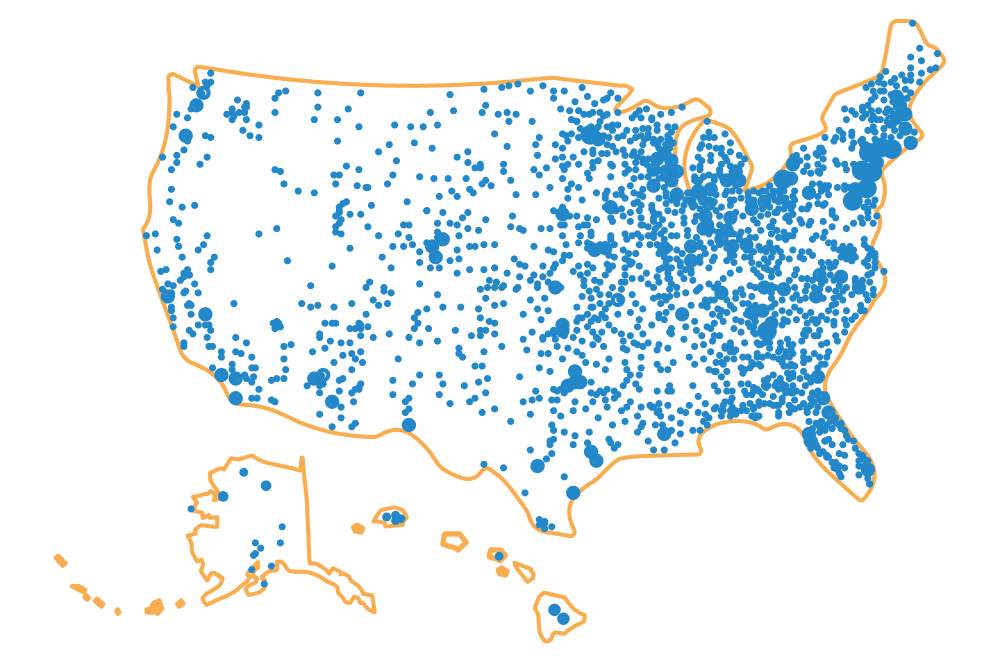The federal government recently added another type of qualified distribution for 529 higher education savings accounts with the SECURE 2.0 Act of 2022, which is part of the Consolidated Appropriations Act, 2023. This new tax-free distribution will allow any unused 529 funds (subject to the requirements listed below) to roll over to a Roth IRA for the same 529 beneficiary without incurring any penalty on the earnings. This new benefit will go into effect in Jan. 1, 2024, and you will be able to take advantage of it with your Ohio 529 Plan, CollegeAdvantage.
There are some requirements in order to use this new qualified distribution. First, a 529 account must be open for the beneficiary for 15 years. Second, the Roth IRA must be for the same beneficiary of the 529. Third, your contributions—which are also known as the principal—must have been in your Ohio 529 account for at least five years before the Roth IRA rollover. Fourth, you can only roll over 529 funds up to the yearly Roth IRA contribution limit, which is $6,500 for 2023. Fifth, the lifetime maximum 529 amount allowed for the Roth IRA rollover is $35,000.
There are still many clarifications and operational issues that will need to be resolved relating to this recent change. We will provide more information once available. Again, keep in mind change does not go into effect until Jan. 1, 2024.
This new qualified distribution joins many other tax-free 529 withdrawals, which can be used to pay for:
- tuition;
- room and board during any academic period in which the 529 beneficiary is enrolled for at least half of the full-time academic workload according to the eligible education institution. Room and board costs can also include rent for off-campus residency and groceries (non-taxable items), provided these costs are equal or less than the same room and board allowances from the accredited education institution;
- mandatory fees;
- computer equipment and related technology as well as internet services;
- books, supplies and equipment related to enrollment and class schedule;
- certain expenses for a special-needs student;
- Qualified apprenticeships costs such as fees, textbooks, supplies, and equipment like required trade tools. The apprenticeship program must be registered with the Secretary of Labor’s National Apprenticeships Act in order to use a 529 plan withdrawal. Interested parties can check the U.S. Labor Department’s search tool to confirm that a program is registered, and therefore, eligible for a 529 withdrawal; and
- Payment of the principal and interest on qualified education loans for the 529 beneficiary or the beneficiary’s siblings. The loan repayment provision applies to repayments up to $10,000 per beneficiary. The $10,000 is a lifetime amount, not an annual limit; and
- Payment of K-12 tuition up to $10,000 per student, per year, for enrollment at public, private, or religious elementary or secondary school. 529 distributions to pay for K-12 tuition is limited to $10,000 per year. Consult your qualified tax advisor for specific information.
This new benefit also addresses a concern of potential 529 savers of what to do with the 529 funds if their child decides not to pursue higher education or if they receive scholarships that more than cover their college costs? With the new Roth IRA rollover option, you can take those 529 education savings and give your children a jumpstart on their retirement savings.
There are already other options available if your child doesn’t want to start using their 529 plan immediately after high school. Besides holding into the 529 savings account to see if your child changes their mind about higher education after they enter the work force, you can transfer the 529 funds to another beneficiary, who must be a family member* to your child — this can include siblings, stepsiblings, stepparents, cousins, nieces and nephews. You could also hold onto the account for your grandchildren’s future college costs since there are no time limits for using 529 plans. If you reach a point where your 529 account is simply not going to be used, you can request a non-qualified withdrawal from your 529 plan. This means that the earnings-only portion of the withdrawal will be taxed on the federal, state, and local level. Like other tax-advantaged saving programs, there will be a 10% federal tax penalty assessed on the earnings portion of the withdrawal for withdrawing money from the 529 plan for costs that aren’t considered qualified higher education expenses. Before you elect to make a non-qualified withdrawal, first talk with your financial advisor or tax consultant to evaluate your options.
Since 1989, Ohio 529 CollegeAdvantage has been helping families across the nation save for their children’s higher education. Ohio’s 529 Plan covers qualified costs at any four-year college or university, two-year community college, trade or vocational school, apprenticeship approved by the U.S. Labor Department, or certificate program nationwide that accepts federal financial aid. Learn, plan, and start for as little as $25 today at CollegeAdvantage.com.
* Internal Revenue Code Section 529 defines a family member as: a son, daughter, stepson or stepdaughter, or a descendant of any such person; a brother, sister, stepbrother, or stepsister; the father or mother, or an ancestor of either; a stepfather or stepmother; a son or daughter of a brother or sister; a brother or sister of the father or mother; a son-in-law, daughter-in-law, father-in-law, mother-in-law, brother-in-law, or sister-in-law; the spouse of the Beneficiary or the spouse of any individual described above; or a first cousin of the Beneficiary. Gift or generation-skipping transfer taxes may apply. Please consult with your tax advisor for further information.








